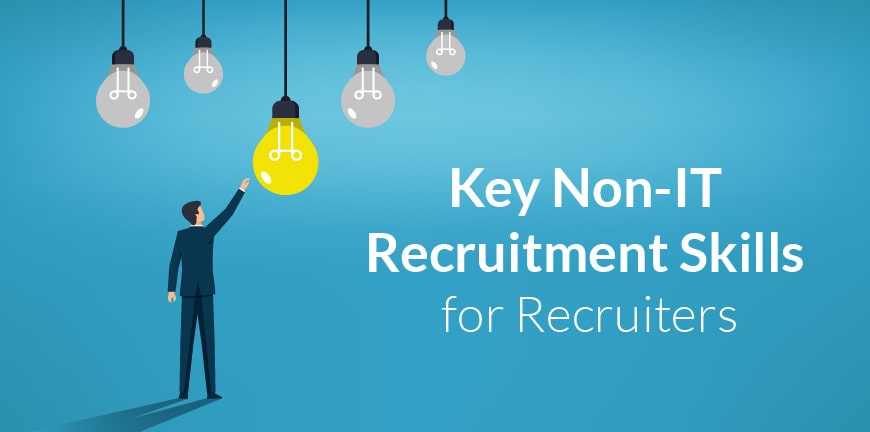
10 Benefits of Hiring Remote Workers in 2025
23/12/2024
State of Industrial Innovation in India: Where Are We Today?
24/12/2024Recruitment of the right talent is only getting more challenging by the day. The unbelievably competitive business landscape and the tight labor market have made hiring talent very difficult. The many tasks in the recruitment process can often lead to bad hires. For HR teams and hiring managers, managing these processes can get frustrating over time. This is where full-cycle recruiting can help. A full-cycle recruiting process makes the hiring process a lot easier, improves the candidate experience, and helps HR stay organized.
What is Full Cycle Recruiting?
Full cycle recruiting refers to the entire recruiting process that includes everything from sourcing, screening, and onboarding to workforce planning and is handled by a team of dedicated recruitment experts or a single recruiter. Often, companies outsource the full cycle recruitment process to third-party recruitment experts who possess the knowledge, experience, and expertise to carry out the same. The full-cycle recruiting process is more of an organized hiring process since one person or a single team handles everything from start to end. It is also one of the most efficient ways to bring in top talent.
What are the Benefits of the Full-cycle Recruiting Process?
There are various advantages of the full-cycle recruiting process. Here are some key benefits for employers-
1. Enhanced candidate experience
Having just one point of contact throughout the recruitment lifecycle is extremely comfortable and convenient for candidates and it automatically enhances the candidate experience. It’s not just easier to know who to contact and when through every stage but is also reassuring for candidates. For recruiters, it helps in creating a better candidate experience as they can develop a better relationship with them with constant communication.
2. Reduced time to hire
When the entire recruitment process is handled by one person or a single dedicated team, can eliminate errors in the process, increase efficiency, and reduce the time between a candidate applying for a job and accepting a job offer.
3. An effective talent acquisition process
A smooth recruitment process has been known to bode well with candidates and a study has revealed that organizations that facilitate a successful recruitment process are employers of choice for candidates. With a better candidate experience, organizations can retain talent more effectively as a result of which a solid talent acquisition process can be formed.
4. Reduced hiring expenses
Full cycle recruiting lessens administrative and operational expenses as there is one dedicated recruiter or a single dedicated team handling the entire process. This decreases the reliance on external agencies and eliminates productivity losses. Additionally, a faster hiring process reduces turnover rates and ensures a better recruitment process.
5. Stronger talent pipeline
Delivering a better candidate experience and a more efficient recruitment journey helps you attract more qualified candidates to your organization and strengthen your talent pipeline.
What are the Steps in Full-cycle Recruiting Services?
There are 5 full cycle recruiting steps in the recruiting process that the recruiter must overlook to ensure a streamlined hiring process. Here is a full-cycle recruiting checklist to follow to reap the best results-
1. Identifying the hiring needs
Creating a job requisition is the first step in the full-cycle recruiting process. The first step involves identifying the need for a new hire, crafting a job description, and sending it to the upper management for approvals
- Assess your workload demands, and project requirements and identify the kind of individual you require and sthe pecific skills, experience, and qualifications required for the position.
- Craft a job description that includes each and every detail regarding job responsibilities, qualifications required, etc. Be specific about what the job role entails and create an SEO strategy to attract the right candidates.
- The job description is then passed on to stakeholders like department heads and gets their approval. This ensures everyone is aligned on the needs and expectations for the new role.
2. Sourcing of candidates
Upon approval of the job description, the next step is to deploy sourcing strategies to attract the right candidates for the job role. Some of the strategies you can use are-
- Post on job boards and leverage the power of social media to increase visibility towards your job openings. Some of the best platforms you can use are LinkedIn, indeed,d and other industry sites.
- Employee referrals are a great source to get qualified candidates. Not only can this bring in some exceptional talent but also ones that fit in well with the culture.
- Seminars and networking events are another great way to meet potential candidates. Not only does this bring brand awareness but also puts you on the map and showcases you as an employer of choice.
3. Screening and interviewing
Once the candidates are sourced, the next crucial step of the hiring process is screening and interviewing candidates.
- Resumes are to be screened to identify candidates who meet the basic qualifications, experience, and skills required. ATS can help with easing the screening process.
- Conduction of phone or video interviews to filter the candidates. You must make sure to ask them every detail regarding their experience, skill,s, and interest in the role.
- Another shorter list of candidates filtered from the phone or video interviews is to be called for an in-person interview to assess their suitability for the role as well as how they can fit into the company culture.
4. Extending a job offer and negotiation
Once the final interviews are done and you have zeroed in on your final candidate, you must extend them a job offer with the right negotiation terms.
- In the job offer, present a competitive salary and benefits package that is in line with the market expectations and bodes well with the candidate’s skills and experience.
- Communicate clearly about what your expectations are from the candidates with regard to the job role and responsibilities and also the future career opportunities they can expect.
- You may have to negotiate the salary, benefits, and other terms to match the candidate’s needs. Effective negotiation can help start the employment relationship on a positive note.
5. Onboarding
A smooth integration is essential during the onboarding of the new candidate.
- Ensure that all the paperwork is in place including employment contracts, tax forms, etc. The new hires must fill in all the important forms required and must be equipped with the right resources like laptops, and other software.
- Introduce your new hire to their new team members as well as to others like relevant department heads etc.
- Provide the required training to the new hire regarding company policies and procedures and other specific tasks. Assign a buddy to help them settle in and understand the company culture in the initial few days.
What are the Best Practices in Full-cycle Recruiting?
Some of the best practices, a full-cycle recruiter can use to streamline the recruiting process, improve the candidate experience, and make smarter hiring decisions are-
1. Focussing on communicating with candidates better
Recruiters must maintain clear and consistent communication with candidates and keep them engaged and informed. They must update them at every step of the hiring process, from acknowledging applications to sharing interview outcomes. Valuing their time helps them build a better notion about the company and its values.
2. Implement effective onboarding practices
The right onboarding process is extremely important when hiring new employees. A structured onboarding plan can help new hires feel welcomed and confident and can boost their productivity. As their employer, you must make sure that they are properly introduced to other team members, conduct training sessions, and ensure that they have one-on-one meetings with managers.
3. Make use of modern recruitment technology for streamlined processes
Leverage essential recruitment software to simplify tasks like sourcing, screening, and scheduling interviews. Tools like applicant tracking systems (ATS) and automated workflows reduce manual work, prevent bottlenecks, and keep the recruiting process organized.
4. Foster team collaboration in hiring
Collaboration between the recruiter and the hiring manager can result in better hiring decisions. Keep the lines of communication open throughout the full cycle recruiting process. Consider involving team members in interviews to get diverse perspectives on candidates.
Are you Looking for an RPO partner?
Choosing the right RPO partner can be a game-changer for your organization’s talent acquisition strategy. An experienced RPO provider like Alp Consulting not only streamlines the hiring process but also enhances the quality of hires, reduces time-to-fill, and aligns recruitment efforts with your business objectives. Whether you’re looking to scale your workforce, address specific hiring challenges, or optimize recruitment costs, partnering with us ensures access to expertise, cutting-edge technology, and a flexible, scalable solution. As your full-cycle recruiting partner, we understand your unique needs and values and will help you build a strong, future-ready workforce and focus on driving your business forward.
Frequently Asked Questions
1. What is full cycle recruiting?
Full cycle recruiting refers to a recruitment process that uses a recruiter to complete each action required to fill a position in an organization. This type of recruitment is also sometimes referred to as end-to-end recruitment or full life cycle recruitment.
2. Why should businesses opt for full-cycle recruiting?
Full cycle recruiting can help businesses hire better candidates in a shorter period of time, offer enhanced candidate experience, reduce hiring costs, improve accountability, and completely streamline the onboarding process, all of which contribute to a better hiring process.
3. How can full-cycle recruiting improve the hiring process?
Some of the ways it can improve the hiring process are by enhancing candidate experience, building a stronger talent pipeline, reducing recruitment costs, swift hiring of candidates, and better accountability.
4. How does full-cycle recruiting benefit the candidates?
Full-cycle recruiting offers a smooth hiring experience for potential candidates. The system of full-cycle recruitment is more personalized and friendly to job seekers.
5. What are the best practices for full-cycle recruiting?
Some of the best practices for full-cycle recruiting are to focus on communicating with candidates better, implement better onboarding practices, use technology to streamline hiring processes, and foster team collaboration.
Contact Us For Business Enquiry

Amit Saproo
Amit Saproo is the Head of Operations at ALP Consulting with nearly 17 years of experience in Executive Search, RPO, Leadership, and IT & Engineering recruitment. He leads nationwide recruitment programs across Technology, BFSI, and R&D domains, driving strategic hiring solutions for diverse client needs. Amit excels in building and managing high-performance teams that deliver scalable, end-to-end recruitment and consulting services.




